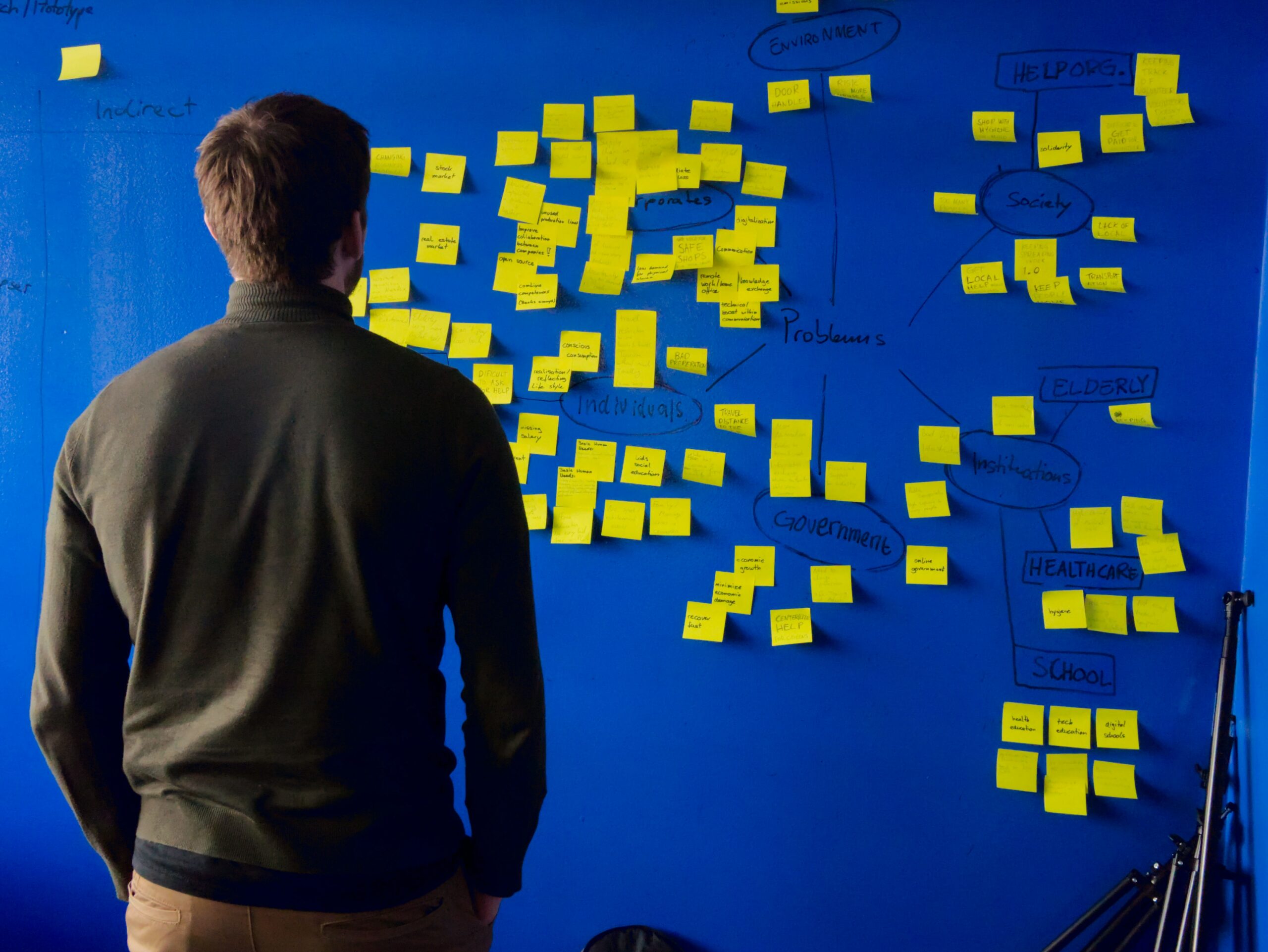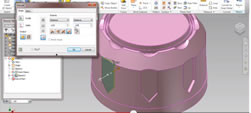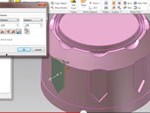1. Introduction
1.1 The Importance of Invention Submission
In today’s rapidly evolving technological landscape, invention submission represents a crucial bridge between innovative ideas and market reality. The process of properly submitting an invention can mean the difference between a groundbreaking concept languishing in obscurity and one that transforms into a successful commercial product. Inventors who understand and master the submission process gain a significant advantage in bringing their ideas to life.
The importance of proper invention submission extends beyond mere procedural compliance. It serves as a structured pathway that helps inventors refine their concepts, protect their intellectual property, and maximize their chances of commercial success. A well-executed submission process can attract potential investors, manufacturers, or licensees while simultaneously protecting the inventor’s rights and interests.
Furthermore, proper invention submission creates a documented history of the invention’s development, which proves invaluable for legal protection and future business negotiations. It demonstrates professionalism and commitment to potential partners and provides a solid foundation for future development and commercialization efforts.
1.2 Overview of the Invention Process
The invention process is a comprehensive journey that begins with initial ideation and extends through commercialization. This process typically follows several distinct phases, each requiring careful attention and specific expertise. Understanding these phases helps inventors navigate the complex path from concept to market-ready product.
The journey usually begins with concept development and initial documentation. This phase involves refining the initial idea, conducting preliminary research, and creating detailed documentation of the invention’s features and potential applications. Inventors must then move through various stages of evaluation, including market research, technical feasibility studies, and commercial viability assessments.
Following evaluation, inventors enter the protection phase, which often involves patent applications and other intellectual property protection measures. This leads to the development phase, where prototypes are created and refined. Finally, the commercialization phase involves bringing the product to market through manufacturing, licensing, or other means.
1.3 What to Expect in This Guide
This comprehensive guide serves as a roadmap through the entire invention submission process, providing detailed insights and practical advice for each stage of the journey. Readers will find specific, actionable information that can be applied to their unique invention situations, along with expert tips and common pitfalls to avoid.
The guide covers everything from basic concepts to advanced strategies, making it valuable for both first-time inventors and experienced innovators. Each section builds upon previous knowledge while introducing new concepts and techniques, creating a logical progression of understanding.
2. Understanding the Fundamentals of Invention Submission
2.1 Defining Invention Submission
Invention submission encompasses the formal process of presenting a new innovation to potential manufacturers, investors, or licensing partners. This process goes far beyond simply describing an idea; it involves creating a comprehensive package that demonstrates the invention’s value, feasibility, and market potential.
A proper invention submission includes several key components: detailed technical documentation, market analysis, prototypes or proof of concept, intellectual property protection documentation, and financial projections. These elements work together to create a compelling case for the invention’s commercial potential while protecting the inventor’s rights and interests.
The submission process also involves strategic decisions about timing, target companies, and presentation methods. These decisions can significantly impact an invention’s chances of success and must be made with careful consideration of market conditions and business objectives.
2.2 Key Terms and Concepts
Understanding the terminology and fundamental concepts of invention submission is crucial for effective communication and decision-making. Key terms include:
Patent Protection: The legal rights granted to inventors to exclude others from making, using, or selling their invention for a limited time in exchange for public disclosure of the invention.
Prior Art: Any evidence that an invention is already known or available to the public before a patent application is filed.
Intellectual Property: Creations of the mind that can be legally protected, including inventions, literary and artistic works, designs, and symbols used in commerce.
Licensing: The practice of granting rights to manufacture and sell an invention while retaining ownership of the intellectual property.
Prototype: A preliminary model of an invention used to demonstrate its functionality and features.
2.3 The Modern Invention Landscape
Today’s invention landscape is characterized by rapid technological advancement, global competition, and evolving intellectual property laws. Digital technologies have transformed how inventors can research, develop, and protect their innovations, while also creating new challenges in maintaining competitive advantages.
The modern landscape includes various pathways to market, from traditional manufacturing and licensing arrangements to crowdfunding and direct-to-consumer models. Understanding these options and their implications is crucial for making informed decisions about invention submission and commercialization strategies.
The rise of open innovation and collaborative development has also changed how companies approach external inventions, creating new opportunities for independent inventors while also increasing competition.
2.4 Understanding Your Role as an Inventor
As an inventor, your role extends beyond creating innovative solutions. You must act as a project manager, researcher, and business strategist to successfully navigate the invention submission process. This requires developing multiple skill sets and understanding various aspects of business and technology.
Successful inventors maintain detailed records, actively protect their intellectual property, and make informed decisions about development and commercialization. They also understand the importance of building professional relationships and maintaining clear communication with potential partners.
Your role includes ongoing learning and adaptation as market conditions and technologies evolve. This might involve staying current with industry trends, understanding new protection mechanisms, and continuously refining your invention based on feedback and market demands.
3. Preliminary Steps and Preparation
3.1 Evaluating Your Invention’s Potential
Before investing significant time and resources into the invention submission process, it’s crucial to conduct a thorough evaluation of your invention’s potential. This evaluation begins with an honest assessment of your invention’s unique value proposition and its ability to solve real-world problems. Consider how your invention improves upon existing solutions or addresses previously unmet needs in the market.
Start by asking yourself fundamental questions about your invention’s practical applications. What specific problem does it solve? How does it solve this problem better than existing solutions? Is the improvement significant enough to justify the cost of development and manufacturing? These questions help establish a foundation for understanding your invention’s market potential.
During this evaluation phase, consider creating a detailed features and benefits analysis. Document not only what your invention does but also why these features matter to potential users. This analysis should include both primary benefits (the main problem your invention solves) and secondary benefits (additional advantages that might appeal to users).
3.2 Initial Market Assessment
Conducting an initial market assessment helps determine whether there’s sufficient demand for your invention to justify further development. This assessment should examine current market conditions, potential market size, and growth trends in relevant industries.
Begin by identifying your target market segments and estimating their size. Research demographic data, industry reports, and market trends that might affect demand for your invention. Consider both direct market potential (immediate applications) and indirect market potential (possible future applications or adaptations).
Pay particular attention to market dynamics such as:
- Current market size and growth projections
- Consumer behavior and purchasing patterns
- Economic factors affecting market demand
- Regulatory environment and compliance requirements
- Distribution channels and market access
3.3 Understanding Your Target Audience
A deep understanding of your target audience is essential for successful invention development and submission. This understanding goes beyond basic demographics to include behavioral patterns, needs, preferences, and pain points that your invention addresses.
Create detailed user personas representing different segments of your target market. These personas should include information about:
- Demographic characteristics
- Typical usage scenarios
- Purchase decision factors
- Price sensitivity
- Technical sophistication
- Access to distribution channels
Consider conducting informal surveys or interviews with potential users to validate your assumptions about their needs and preferences. This feedback can be invaluable for refining your invention and strengthening your submission package.
3.4 Resource Planning and Timeline Development
Successful invention submission requires careful planning of both resources and time. Create a comprehensive project plan that outlines all necessary steps, from initial development through submission and potential commercialization.
Your resource plan should account for:
- Financial requirements for development and protection
- Technical expertise needed
- Time commitment required
- Professional services (legal, engineering, etc.)
- Materials and equipment for prototyping
- Marketing and presentation materials
Develop a realistic timeline that includes major milestones and dependencies. Build in contingency time for unexpected challenges and iterations. Remember that certain steps, such as patent applications, have specific timing requirements that must be considered in your planning.
4. Documentation and Record Keeping
4.1 The Inventor’s Notebook
The inventor’s notebook serves as the primary documentation tool throughout the invention process. This notebook should be a bound document with numbered pages that cannot be easily altered or removed. It provides a chronological record of your invention’s development and can serve as crucial evidence in legal proceedings.
Your inventor’s notebook should include:
- Detailed descriptions of your invention and its development
- Sketches and diagrams
- Test results and observations
- Problems encountered and solutions developed
- Ideas for improvements or variations
- Dated entries for each development milestone
- Witness signatures on key developments
Maintain consistent documentation habits, making entries in permanent ink and having them witnessed and dated regularly. This creates a clear timeline of your invention’s development and can help establish priority dates for patent purposes.
4.2 Proper Documentation Techniques
Effective documentation requires consistent adherence to best practices that ensure your records will be considered reliable and admissible if needed for legal purposes. These techniques include:
Always date each entry and have it signed by a witness who understands the invention but has no financial interest in it. Use permanent ink and write clearly. If you make mistakes, cross them out with a single line rather than erasing or obliterating them. Include detailed descriptions of all aspects of your invention, including alternative versions and improvements you consider.
When documenting technical aspects, include:
- Detailed written descriptions
- Precise measurements and specifications
- Materials used and their properties
- Manufacturing processes considered
- Test procedures and results
- Quality control measures
4.3 Digital Record Management
In addition to physical documentation, maintaining organized digital records is essential in today’s technological environment. Create a systematic approach to storing and organizing digital files related to your invention.
Implement a digital filing system that includes:
- Computer-aided design (CAD) files
- Digital photographs and videos
- Test data and analysis
- Market research documents
- Communication records
- Financial records
- Legal documents
Ensure regular backups of all digital files and consider using cloud storage with appropriate security measures. Maintain version control for all digital documents, clearly indicating revision dates and changes made.
4.4 Supporting Evidence and Proof of Concept
Gathering and organizing supporting evidence strengthens your invention submission and helps demonstrate its viability. This evidence should include both technical proof of concept and market validation materials.
Technical proof of concept might include:
- Working prototypes or models
- Test results and performance data
- Engineering analyses
- Expert opinions or evaluations
- Technical feasibility studies
- Safety testing results
Market validation materials might include:
- Market research data
- Customer feedback
- Letters of interest from potential customers
- Expert market analyses
- Competitive product comparisons
- Cost analysis and pricing studies
Organize this evidence systematically, ensuring it’s readily accessible and clearly supports your invention’s technical and commercial viability. Keep detailed records of how and when this evidence was obtained, as this information may be important for future reference or legal purposes.
5. Patent Research and Prior Art Search
5.1 Understanding Prior Art
Prior art encompasses everything made public about your invention before the filing date of a patent application. This includes existing patents, published patent applications, academic papers, product manuals, public demonstrations, sales literature, and even social media posts. Understanding prior art is crucial because it determines whether your invention is truly novel and non-obvious – two key requirements for patentability.
Prior art can take many forms beyond just patents. For instance, if someone described a similar invention in a blog post five years ago, that post could constitute prior art, even if the writer never developed or patented the idea. Similarly, if a product with similar features was displayed at a trade show, that public display counts as prior art, regardless of whether the product ever reached the market.
The scope of prior art extends globally, not just to your own country. An invention published in any language, anywhere in the world, could potentially invalidate your patent application. This global nature of prior art makes thorough searching particularly important and challenging.
5.2 Conducting Effective Patent Searches
A comprehensive patent search involves multiple stages and various resources. Begin with a broad search to understand the general landscape of your invention’s field, then gradually narrow your focus to more specific aspects of your innovation.
Start with free patent databases like Google Patents and USPTO’s Patent Full-Text Database (PatFT). These platforms provide access to millions of patents and patent applications. When searching, use multiple keyword combinations that describe your invention’s features and functions. Consider synonyms and alternative terms that others might use to describe similar concepts.
For example, if your invention involves a new type of water filtration system, search terms might include:
- Water filtration method
- Liquid purification system
- Fluid cleansing apparatus
- Aqueous separation device
- Water treatment process
Document your search strategy, including all search terms used and databases consulted. This documentation proves valuable both for refining your search and demonstrating due diligence if needed later.
5.3 Analyzing Search Results
When reviewing search results, examine both the claims and specifications of relevant patents. The claims define the legal scope of protection, while the specifications often provide helpful technical background and context. Pay particular attention to patents in your specific technical field, but don’t overlook patents from related fields that might employ similar principles.
Create a systematic method for analyzing each potentially relevant patent:
First, read the abstract to determine basic relevance
Then examine the claims to understand the protected intellectual property
Finally, review the detailed description for technical insights
Consider how each relevant patent differs from your invention. Look for opportunities to innovate beyond existing solutions while being mindful of potential infringement issues.
5.4 Documenting Search Findings
Maintain detailed records of your patent search process and findings. Create summary sheets for relevant patents that include:
- The patent number and filing date
- Key claims and how they relate to your invention
- Important technical details from the specifications
- Your analysis of similarities and differences
Organize these summaries in a way that highlights the evolution of technology in your field and helps identify gaps where your invention provides novel solutions.
5.5 Working with Patent Databases
Different patent databases offer varying features and coverage. While free databases provide a good starting point, professional databases like PatBase or Derwent Innovation offer advanced search capabilities and analytical tools.
Learn to use classification codes (like International Patent Classification – IPC) to enhance your search effectiveness. These codes help identify relevant patents that might use different terminology to describe similar concepts.
6. Intellectual Property Protection Strategies
6.1 Types of Patents
Three main types of patents exist in the United States, each serving different purposes:
Utility Patents protect the functional aspects of inventions, including processes, machines, manufactures, and compositions of matter. These are the most common type of patent and provide protection for up to 20 years from the filing date. For instance, a new mechanism for a door lock would qualify for a utility patent.
Design Patents protect the ornamental design of functional items. These patents last for 15 years from the grant date and cover the way an article looks rather than how it works. The distinctive shape of a smartphone or the pattern on a tire tread might qualify for design patent protection.
Plant Patents cover new varieties of plants that can be reproduced asexually. These are specifically for plant breeders and agricultural innovations.
6.2 Provisional vs. Non-Provisional Patents
A provisional patent application provides a lower-cost way to establish an early filing date for your invention. It gives you 12 months to develop your invention further and file a non-provisional application. During this time, you can mark your invention as “patent pending.”
However, provisional applications have limitations. They never mature into patents on their own – you must file a non-provisional application within the 12-month period. Additionally, your non-provisional application can only claim the benefit of material actually included in the provisional application.
The decision between starting with a provisional or going directly to a non-provisional application depends on factors like:
- Development stage of your invention
- Available funding
- Market timing considerations
- Competition in your field
6.3 International Patent Considerations
Patent protection is territorial – a U.S. patent provides rights only within the United States. For international protection, you must file patent applications in each country where you seek protection, either directly or through international patent systems like the Patent Cooperation Treaty (PCT).
The PCT system provides a streamlined filing procedure for seeking patent protection in multiple countries. It gives you up to 30 months from your earliest filing date to decide in which member countries you want to pursue patent protection.
Consider your international filing strategy early, as foreign filing decisions must typically be made within 12 months of your first patent application. Factors influencing your international strategy include:
- Potential markets for your invention
- Manufacturing locations
- Competitor locations
- Budget constraints
- Enforcement capabilities in different jurisdictions
6.4 Trade Secrets and Other Protections
Sometimes, keeping an invention as a trade secret provides better protection than patent filing. Trade secrets can last indefinitely and don’t require public disclosure, but they must be kept confidential to maintain protection. Famous examples include the Coca-Cola formula and KFC’s secret recipe.
Consider the following factors when deciding between patent protection and trade secret status:
- Ease of reverse engineering your invention
- Likelihood of independent development by others
- Cost of maintaining secrecy
- Length of likely commercial advantage
- Ability to detect infringement
Other forms of intellectual property protection might also be relevant, such as:
- Trademarks for brand names and logos
- Copyrights for software code or documentation
- Industrial design rights for product appearance
6.5 Timing Your Patent Application
Timing your patent application involves balancing multiple factors. File too early, and you might miss including important improvements. File too late, and you risk losing rights or facing prior art from competitors.
Key considerations for timing include:
- Public disclosure plans
- Development timeline
- Market readiness
- Funding availability
- Competitor activity
Remember that in most countries, public disclosure of your invention starts a one-year clock for filing a patent application. After that year, you generally lose patent rights. Some countries have no grace period at all, requiring patent filing before any public disclosure.
The America Invents Act established a “first-inventor-to-file” system in the United States, making prompt filing more important than ever. This system means that when two inventors file for the same invention, the first to file generally gets the patent, regardless of who invented it first.
7. Professional Evaluation and Market Analysis
7.1 Market Size Assessment
Understanding your invention’s potential market size forms the foundation of its commercial viability. This assessment requires examining both the total addressable market (TAM) and the serviceable obtainable market (SOM). The total addressable market represents everyone who could theoretically benefit from your invention, while the serviceable obtainable market represents the portion you can realistically reach and serve.
When assessing market size, consider multiple layers of market potential. For instance, if you’ve invented a new type of ergonomic computer mouse, your market analysis should examine the overall computer accessories market, the specific mouse segment, and the premium ergonomic device subsegment. This layered approach helps create a realistic picture of your market opportunity.
To calculate market size effectively, gather data from industry reports, government statistics, trade associations, and market research firms. Consider both current market size and growth projections. Factor in market trends that could affect future demand, such as technological advances, demographic changes, or shifting consumer preferences.
7.2 Competition Analysis
A thorough competitive analysis reveals not just who your competitors are, but also their strengths, weaknesses, and market positioning. This understanding helps you position your invention effectively and identify opportunities for differentiation. Begin by identifying both direct competitors (those offering similar solutions) and indirect competitors (those solving the same problem differently).
Create detailed profiles of each significant competitor, including information about their:
- Product features and specifications
- Pricing strategies and market positioning
- Distribution channels and geographic presence
- Patent portfolios and intellectual property positions
- Company size and financial resources
- Marketing approaches and brand positioning
Look for patterns in competitor behavior that might indicate market opportunities or challenges. For example, if several competitors have recently entered or left the market, investigate the reasons behind these moves to better understand market dynamics.
7.3 Cost Structure Evaluation
A detailed cost structure evaluation helps determine whether your invention can be manufactured and sold profitably. This analysis should cover all aspects of bringing your product to market, from development through production and distribution.
Begin with development costs, including:
- Research and development expenses
- Prototyping and testing costs
- Tooling and equipment investments
- Regulatory compliance and certification expenses
- Patent and legal fees
Then examine production costs:
- Raw materials and components
- Labor and assembly
- Quality control and testing
- Packaging and shipping materials
- Storage and handling
Finally, consider ongoing operational costs:
- Marketing and sales expenses
- Distribution and logistics
- Customer service and support
- Warranty and returns handling
- Administrative overhead
7.4 Commercial Viability Studies
Commercial viability studies bring together market, technical, and financial analyses to determine whether your invention represents a viable business opportunity. These studies should examine both short-term feasibility and long-term sustainability.
Key components of a commercial viability study include:
- Technical feasibility assessment
- Production scalability analysis
- Distribution channel evaluation
- Regulatory compliance requirements
- Financial projections and break-even analysis
- Risk assessment and mitigation strategies
The study should also consider external factors that could affect commercial success, such as:
- Economic conditions and trends
- Regulatory environment changes
- Technological advances
- Social and demographic shifts
- Environmental considerations
7.5 Professional Evaluation Services
Professional evaluation services can provide objective assessments of your invention’s potential. These services typically offer expertise in specific areas such as technical feasibility, market analysis, or patent positioning. When selecting an evaluation service, look for providers with experience in your invention’s field and a track record of thorough, unbiased assessments.
Professional evaluators can often provide:
Technical feasibility reports
Market opportunity assessments
Patent landscape analyses
Manufacturing cost estimates
Commercial potential ratings
Risk assessment reports
8. Creating a Professional Submission Package
8.1 Executive Summary Development
The executive summary serves as the gateway to your invention submission package. It must capture attention quickly while conveying the essential value proposition of your invention. A well-crafted executive summary includes a clear description of the problem your invention solves, how it solves it, and why your solution is superior to existing alternatives.
Structure your executive summary to include:
A compelling opening that hooks the reader
Clear statement of the problem and solution
Unique value proposition
Market opportunity overview
Business model summary
Key competitive advantages
Financial highlights
Implementation roadmap
Keep the language clear and concise, avoiding technical jargon unless absolutely necessary. Focus on benefits rather than features, and emphasize the commercial potential of your invention.
8.2 Technical Documentation
Technical documentation must be comprehensive enough to demonstrate how your invention works while remaining accessible to non-technical readers. Create multiple versions of technical documentation tailored to different audiences, from engineers to business executives.
Include detailed information about:
- Operating principles and mechanisms
- Materials and components
- Manufacturing processes
- Technical specifications
- Performance data
- Safety considerations
- Quality control requirements
Support technical descriptions with:
- Detailed drawings and diagrams
- 3D renderings
- Circuit diagrams (if applicable)
- Flow charts
- Performance graphs
- Test results
8.3 Visual Presentations and Prototypes
Visual elements play a crucial role in helping others understand your invention. Develop a range of visual materials that demonstrate your invention’s features, benefits, and applications. These materials should be professional in quality and appropriate for various presentation contexts.
Create a comprehensive visual package including:
- Professional photographs
- 3D renderings
- Technical drawings
- Exploded views
- User interface designs
- Product packaging concepts
If possible, include multiple prototype versions:
- Proof of concept prototypes
- Working prototypes
- Appearance prototypes
- Production-ready prototypes
8.4 Market Research Integration
Integrate your market research findings into the submission package in a way that builds a compelling case for your invention’s commercial potential. Present market data clearly and support all claims with credible sources.
Include detailed analysis of:
- Market size and growth potential
- Customer segments and needs
- Competitive landscape
- Pricing strategies
- Distribution channels
- Market entry barriers
- Growth opportunities
Support market claims with
- Industry statistics
- Customer surveys
- Expert opinions
- Market trend data
- Competitive analysis
- Consumer behavior studies
8.5 Financial Projections
Financial projections demonstrate your invention’s potential return on investment. Create realistic, well-supported financial models that show both costs and revenue potential over multiple time horizons.
Develop detailed projections for:
- Development costs
- Production costs
- Marketing expenses
- Sales forecasts
- Revenue streams
- Profit margins
- Cash flow requirements
- Return on investment
Include multiple scenarios:
- Conservative case
- Most likely case
- Optimistic case
- Break-even analysis
- Sensitivity analysis
Support your projections with:
- Market size data
- Pricing analysis
- Cost estimates
- Industry benchmarks
- Growth assumptions
- Risk factors
9. Submission Pathways and Strategies
9.1 Direct Company Submission
Direct company submission represents one of the most straightforward paths to market for your invention. This approach involves identifying companies that might be interested in your invention and approaching them directly with your submission package. The process requires careful research to identify appropriate companies and thorough preparation to ensure your submission meets their requirements.
When pursuing direct submission, begin by researching companies that operate in your invention’s market space. Look for organizations with a history of innovation and product development in related areas. Consider their market position, technical capabilities, and financial resources. Companies that have successfully commercialized similar products often make good targets, as they already understand the market and have established distribution channels.
The submission process typically begins with an initial inquiry to determine the company’s interest and submission requirements. Many large companies have formal invention submission programs with specific guidelines and procedures. Following these guidelines precisely is crucial for getting your invention considered. Remember that some companies may require you to sign their own non-disclosure agreement before reviewing your submission.
9.2 Licensing Options
Licensing represents a popular pathway for inventors who want to monetize their invention without taking on manufacturing and distribution responsibilities. Through licensing, you grant another company the right to produce and sell your invention in exchange for royalty payments or other compensation. This approach can be particularly attractive if you lack the resources or desire to manufacture and market the product yourself.
The licensing process typically begins with identifying potential licensees and preparing a compelling licensing presentation. Your presentation should emphasize the commercial potential of your invention and demonstrate why licensing it would benefit the licensee. Consider different licensing structures, such as exclusive versus non-exclusive licenses, territorial restrictions, and various royalty arrangements. The terms of your licensing agreement will significantly impact your long-term returns, so consider seeking professional guidance during negotiations.
Success in licensing often depends on demonstrating both technical viability and market potential. Potential licensees will want to see evidence that your invention works as claimed and that there’s sufficient market demand to justify their investment. They’ll also want assurance that your intellectual property protection is solid and that they’ll have freedom to operate without infringing others’ rights.
9.3 Independent Manufacturing
Choosing to manufacture your invention independently gives you maximum control over your product but also requires the most significant investment of time and resources. This pathway involves developing production capabilities, establishing supply chains, and creating distribution networks. It’s particularly suitable for inventors who have manufacturing experience or access to production facilities.
The independent manufacturing route requires careful planning and substantial upfront investment. You’ll need to develop detailed manufacturing processes, source materials and components, establish quality control procedures, and create efficient production workflows. Consider starting with small production runs to test your processes and market response before scaling up. This approach allows you to refine your manufacturing methods and minimize risk.
Success in independent manufacturing often depends on building strong relationships with suppliers, establishing reliable quality control systems, and developing efficient distribution channels. You’ll need to manage inventory effectively, maintain consistent product quality, and respond quickly to market demands. Consider whether to manufacture in-house or work with contract manufacturers, each approach having its own advantages and challenges.
9.4 Working with Invention Promotion Companies
Invention promotion companies offer services to help inventors commercialize their ideas, but they require careful evaluation before engagement. While some companies provide valuable services, others may not deliver on their promises. Understanding how to evaluate these companies and their offerings is crucial for making informed decisions about using their services.
When considering an invention promotion company, research their track record thoroughly. Ask for specific examples of inventions they’ve successfully commercialized and contact references if possible. Understand exactly what services they provide and their fee structure. Be particularly wary of companies that guarantee success or require large upfront fees without clear deliverables.
The best invention promotion companies provide comprehensive services that might include patent searches, market research, prototype development, and manufacturing assistance. They should be transparent about their processes, fees, and success rates. Look for companies that take time to understand your invention and provide realistic assessments of its potential.
9.5 Hybrid Approaches
Hybrid approaches combine elements of different submission pathways to create a customized strategy for your invention. This might involve pursuing multiple pathways simultaneously or transitioning between approaches as your invention develops. A hybrid strategy can help maximize your chances of success while managing risks and resources effectively.
Consider starting with a licensing approach while simultaneously developing manufacturing capabilities. This allows you to generate revenue through licensing while building the infrastructure for independent production. Alternatively, you might work with an invention promotion company for initial market research and prototype development before pursuing direct company submissions or licensing arrangements.
10. Working with Companies and Manufacturers
10.1 Company Research and Selection
Selecting the right companies to work with is crucial for your invention’s success. The research process should examine not just a company’s market position and technical capabilities, but also their culture of innovation and history of working with independent inventors. Look for companies that have successfully commercialized similar products and have the resources to bring your invention to market effectively.
When researching potential partners, examine their product development cycles, market presence, and financial stability. Consider their existing product lines and how your invention might fit into their portfolio. Look for companies that have gaps in their product offerings that your invention could fill. Review their annual reports, press releases, and patent filings to understand their strategic direction and innovation priorities.
10.2 Initial Contact Strategies
The initial approach to a company requires careful planning and execution. Your first contact should be professional, concise, and designed to generate interest without revealing confidential details. Begin with a brief introduction that clearly states the problem your invention solves and its potential market impact. Follow the company’s established procedures for submission if they exist.
Your initial communication should demonstrate that you’ve done your homework about the company and can articulate why your invention would be valuable to them specifically. Avoid sending unsolicited detailed information or prototypes in your first contact. Instead, focus on opening a dialogue and establishing a proper channel for further discussion.
10.3 Negotiation Fundamentals
Successful negotiation requires understanding both your own objectives and the other party’s interests. Prepare thoroughly by knowing your invention’s value proposition, market potential, and competitive advantages. Understand your bottom line while remaining flexible on non-essential points. Remember that successful negotiations often result in arrangements that benefit both parties.
During negotiations, maintain clear communication and document all agreements and discussions. Pay attention to both the explicit terms being discussed and implicit signals about the other party’s priorities and concerns. Be prepared to discuss various aspects of your invention, from technical details to market potential, and have supporting evidence ready for your claims.
10.4 Partnership Agreements
Partnership agreements formalize the relationship between you and the company developing your invention. These agreements should clearly define roles, responsibilities, and expectations. They typically cover intellectual property rights, development responsibilities, financial arrangements, and timelines. Consider having an experienced attorney review any agreement before signing.
The agreement should address key issues such as ownership of improvements to the invention, termination conditions, and dispute resolution procedures. Include clear performance metrics and milestones to ensure both parties remain aligned throughout the development process. Consider including provisions for regular reviews and adjustments as circumstances change.
10.5 Quality Control and Standards
Maintaining quality control is essential when working with manufacturers or development partners. Establish clear quality standards and testing procedures early in the relationship. Document acceptable tolerances, testing methods, and quality assurance processes. Regular monitoring and communication help ensure these standards are consistently met.
Create systems for tracking and addressing quality issues when they arise. This includes establishing clear communication channels, regular quality reviews, and procedures for handling non-conforming products. Consider implementing periodic audits and inspections to verify compliance with quality standards. Remember that your invention’s reputation and success depend on consistent quality in production.
11. Legal Considerations and Agreements
11.1 Non-Disclosure Agreements
Non-disclosure agreements (NDAs) serve as the first line of defense in protecting your intellectual property during discussions with potential partners, manufacturers, or investors. These legal documents establish confidentiality obligations and define what information is considered confidential. A well-crafted NDA should clearly specify the scope of confidential information, the duration of the confidentiality obligation, and the permitted uses of the disclosed information.
When preparing NDAs, consider including provisions that address not only the direct disclosure of confidential information but also indirect disclosures that might occur through demonstrations, prototypes, or technical discussions. The agreement should specify how confidential information must be handled, stored, and eventually returned or destroyed. It’s important to include provisions that address the creation of derivative works or improvements based on your confidential information, as well as the ownership of such developments.
11.2 Licensing Agreements
Licensing agreements form the foundation of commercialization relationships when you choose to partner with other companies to manufacture or sell your invention. These agreements must comprehensively address all aspects of the licensing relationship, including the scope of rights granted, territory limitations, and financial terms. A thorough licensing agreement begins by clearly defining the licensed intellectual property and specifying exactly what rights are being granted to the licensee.
The financial structure of licensing agreements typically includes several components. Beyond basic royalty rates, consider including provisions for minimum guaranteed payments, milestone payments, and advances against future royalties. The agreement should also address how royalties will be calculated, when they must be paid, and what audit rights you’ll have to verify royalty payments. Include clear definitions of net sales or other bases for royalty calculations to prevent future disputes.
11.3 Manufacturing Contracts
Manufacturing contracts establish the legal framework for production relationships, whether with contract manufacturers or production partners. These agreements must address quality standards, production schedules, cost structures, and responsibilities for materials and components. The contract should clearly define manufacturing specifications, including acceptable tolerances and quality control procedures.
Payment terms in manufacturing contracts require careful consideration. Address not only basic pricing but also how price adjustments will be handled for changes in material costs or production volumes. Include provisions for handling defective products, warranty claims, and product liability issues. The agreement should also specify ownership of custom tooling, molds, or other production equipment created specifically for your invention.
11.4 Distribution Agreements
Distribution agreements outline the terms under which others may sell and distribute your invention. These agreements must carefully balance providing distributors with sufficient rights and incentives while maintaining appropriate control over your product’s market presence. The agreement should clearly define the distributor’s territory, whether the distribution rights are exclusive or non-exclusive, and any performance requirements the distributor must meet to maintain their rights.
Consider including provisions that address minimum purchase requirements, inventory requirements, and marketing obligations. The agreement should specify how pricing will be handled, including any restrictions on the distributor’s pricing to end customers. Include clear terms for termination and what happens to remaining inventory upon termination.
11.5 Legal Counsel Selection
Selecting appropriate legal counsel represents a crucial decision in protecting your invention and navigating complex business relationships. The ideal counsel should have specific experience in intellectual property law and demonstrated expertise in your invention’s technical field. When selecting counsel, consider their experience with similar inventions and their track record in handling both prosecution and enforcement of intellectual property rights.
Your legal counsel should be able to provide strategic advice beyond just basic legal services. They should understand your business objectives and help structure legal protection that aligns with your commercialization strategy. Consider their ability to handle international intellectual property matters if your invention has global potential. Establish clear communication protocols and fee arrangements early in the relationship to ensure efficient collaboration.
12. Manufacturing and Production Planning
12.1 Production Methods Assessment
Assessing production methods requires a comprehensive analysis of various manufacturing approaches to determine the most efficient and cost-effective way to produce your invention. This process begins with a detailed examination of your product’s design and components to identify the most appropriate manufacturing processes. Consider both traditional manufacturing methods and emerging technologies that might offer advantages in terms of cost, quality, or flexibility.
The assessment should examine factors such as production volume requirements, material specifications, assembly complexity, and quality control needs. Consider how different production methods might affect not only the initial manufacturing costs but also long-term scalability and product quality. This analysis should include consideration of automation possibilities and the trade-offs between labor-intensive and automated processes.
12.2 Cost Analysis and Optimization
Cost analysis in manufacturing requires a deep understanding of all components that contribute to the final product cost. Begin by analyzing material costs, including both raw materials and components. Consider how material choices affect not only direct costs but also manufacturing processes and product performance. Examine labor requirements for different production approaches and how these costs might vary with production volume.
Look for opportunities to optimize costs without compromising product quality. This might involve redesigning components for easier manufacture, sourcing alternative materials, or modifying assembly processes. Consider the impact of production volume on unit costs and how different manufacturing approaches might affect economies of scale. Remember to factor in overhead costs, including equipment maintenance, facility costs, and quality control processes.
12.3 Quality Control Systems
Quality control systems must be integrated into every stage of the manufacturing process to ensure consistent product quality. Begin by establishing clear quality standards and specifications for all components and assembly processes. Develop testing procedures that can effectively verify compliance with these standards. Consider how quality control measures will be implemented at different production volumes and how they might need to be adjusted as production scales up.
Create procedures for documenting quality control results and tracking any issues that arise. Develop systems for identifying the root causes of quality problems and implementing corrective actions. Consider how automated testing and inspection systems might be incorporated to improve consistency and efficiency in quality control processes.
12.4 Supply Chain Management
Effective supply chain management ensures reliable access to all necessary materials and components while optimizing inventory costs. Begin by identifying all critical components and materials needed for production. Evaluate potential suppliers based on factors including quality, reliability, cost, and production capacity. Consider developing relationships with multiple suppliers for critical components to reduce supply chain risks.
Develop systems for managing inventory levels and coordinating deliveries to match production schedules. Consider implementing just-in-time inventory systems where appropriate to reduce storage costs and improve cash flow. Create contingency plans for potential supply chain disruptions, including identifying alternative suppliers and maintaining appropriate safety stock levels.
12.5 Scaling Strategies
Developing effective scaling strategies requires careful planning to ensure smooth transitions as production volumes increase. Begin by identifying potential bottlenecks in the production process and developing plans to address them before they impact production. Consider how different aspects of the manufacturing process might need to be modified or upgraded as production volumes increase.
Plan for incremental scaling steps that allow for controlled growth while maintaining product quality and cost efficiency. Consider how automation might be gradually introduced to improve efficiency at higher production volumes. Develop training programs to ensure workforce skills keep pace with production requirements. Remember to factor in the capital requirements for scaling and plan for appropriate financing to support growth.
13. Marketing and Distribution Strategies
13.1 Marketing Plan Development
A comprehensive marketing plan serves as the roadmap for introducing your invention to the market and building sustained demand. The development of this plan begins with a deep understanding of your target market’s needs, preferences, and buying behaviors. Your marketing plan should articulate how your invention solves specific problems or fulfills particular desires for your target customers, creating a compelling value proposition that resonates with their needs.
The foundation of your marketing plan should include thorough market segmentation, identifying the specific groups most likely to benefit from your invention. This segmentation goes beyond basic demographics to understand the psychological and behavioral factors that influence purchasing decisions. By understanding these factors, you can craft messaging that speaks directly to your target market’s pain points and aspirations.
Consider the customer journey from initial awareness through purchase and ongoing usage. Your marketing plan should address how you’ll reach potential customers at each stage of this journey, using appropriate channels and messages. Think about how you’ll build awareness, generate interest, create desire, and ultimately drive action among your target customers.
13.2 Channel Strategy
Your channel strategy determines how your invention reaches end users, encompassing both distribution channels and marketing channels. The development of an effective channel strategy requires understanding where your target customers prefer to shop and how they gather information about products like yours. This understanding helps you select the most appropriate channels for both marketing communications and product distribution.
When developing your channel strategy, consider the unique characteristics of different channels and how they align with your invention’s requirements. Some channels may offer better margins while others provide broader reach. Some might offer better support for technical products, while others excel at reaching specific customer segments. The key is to select channels that not only reach your target market effectively but also provide the right level of support and service for your invention.
Consider how different channels might work together in a complementary fashion. For instance, online channels might support brick-and-mortar sales by providing detailed product information and customer reviews, while physical locations offer hands-on experience with your invention. Your channel strategy should create a seamless experience across all customer touchpoints.
13.3 Pricing Models
Developing effective pricing models requires balancing multiple factors including costs, market positioning, competitive landscape, and customer perceived value. Your pricing strategy should reflect both the value your invention provides to customers and your long-term business objectives. Consider how different pricing models might affect market adoption and long-term profitability.
The process of determining optimal pricing begins with understanding your costs and desired margins, but it shouldn’t end there. Research how customers perceive the value of your invention and what they’re willing to pay for the benefits it provides. Consider how your pricing positions your invention in the market relative to competing products or alternative solutions.
Explore different pricing structures that might be appropriate for your invention. This might include tiered pricing for different market segments, subscription models for ongoing services, or premium pricing for enhanced features. Your pricing model should be flexible enough to accommodate market changes while maintaining profitability.
13.4 Promotion Techniques
Effective promotion requires a mix of techniques tailored to your target market and invention characteristics. Your promotional strategy should focus on communicating your invention’s unique value proposition through channels that reach and resonate with your target audience. Consider how different promotional techniques can work together to build awareness and drive adoption of your invention.
Educational content often plays a crucial role in promoting innovative products. This might include demonstrations, tutorials, case studies, and other materials that help potential customers understand the benefits and applications of your invention. Consider how you can use various media formats to effectively showcase your invention’s features and benefits.
Your promotional strategy should also include plans for building and maintaining relationships with customers. This might involve regular communications, customer support programs, and engagement through social media or other channels. Consider how you can create ongoing dialogue with customers to gather feedback and build loyalty.
13.5 Distribution Network Development
Building a robust distribution network requires careful planning and ongoing management of relationships with various partners. The development of your distribution network should focus on creating efficient pathways to market while maintaining appropriate control over how your invention reaches end users. Consider how different distribution partners might contribute to your overall market coverage and customer service objectives.
When developing your distribution network, consider factors such as geographic coverage, technical expertise, inventory management capabilities, and financial stability of potential partners. Your network should provide adequate market coverage while maintaining efficient inventory levels and ensuring proper product handling and support.
The success of your distribution network depends largely on the strength of your relationships with distribution partners. Invest time in understanding their needs and objectives, and develop programs that align their interests with yours. Consider how you can provide support through training, marketing materials, and other resources that help them succeed in selling your invention.
14. Funding and Financial Planning
14.1 Funding Options Overview
Understanding the range of funding options available for your invention helps you make informed decisions about financing its development and commercialization. Different funding sources offer varying advantages and requirements, and your choice of funding can significantly impact your invention’s development path and your level of control over the process.
Traditional funding sources include bank loans, venture capital, angel investors, and crowdfunding platforms. Each option comes with its own set of requirements, benefits, and potential drawbacks. Bank loans provide straightforward financing but typically require collateral and a solid business plan. Venture capital can provide substantial funding and valuable business expertise but usually requires giving up significant equity and control. Angel investors might offer more flexible terms but may provide smaller amounts of funding.
Consider how different funding sources align with your goals and timeline. Some sources provide quick access to capital but may have higher costs or more stringent requirements. Others might take longer to secure but offer better terms or valuable partnerships. Your funding strategy should balance immediate needs with long-term objectives.
14.2 Investment Strategies
Developing effective investment strategies requires careful consideration of how to allocate available resources across different aspects of your invention’s development and commercialization. Your investment strategy should prioritize activities that create the most value and advance your invention toward market success. Consider both short-term needs and long-term growth requirements when planning investments.
Investment decisions should be guided by clear objectives and metrics for success. Consider how different investments contribute to key goals such as protecting intellectual property, developing production capabilities, building market presence, or expanding distribution networks. Your strategy should include contingency plans for adjusting investments based on market response and changing conditions.
Regular review and adjustment of your investment strategy ensures resources continue to be allocated effectively as your invention moves through different stages of development and commercialization. Consider how you can maintain flexibility while staying focused on core objectives.
14.3 Budget Development
Creating comprehensive budgets requires detailed planning and realistic assumptions about costs, revenues, and timing. Your budget should cover all aspects of invention development and commercialization, from initial research and prototyping through production and market launch. Consider both one-time costs and ongoing operational requirements.
The budgeting process should include detailed analysis of cost drivers and potential variations in expenses. Consider how different scenarios might affect your funding requirements and cash flow. Your budget should include appropriate contingencies for unexpected expenses or delays while maintaining focus on efficient resource utilization.
Regular budget reviews and updates help ensure your financial planning remains aligned with actual results and changing conditions. Consider how you can build flexibility into your budget while maintaining appropriate control over expenses and investments.
14.4 Financial Projections
Developing realistic financial projections helps guide decision-making and supports funding efforts. Your projections should be based on well-researched assumptions about market size, adoption rates, pricing, costs, and other key factors. Consider how different scenarios might affect your financial outcomes and what indicators might signal the need for adjusting your plans.
Financial projections should include detailed forecasts of revenues, expenses, cash flows, and profitability under various scenarios. Consider how different factors might affect your projections and what steps you might take to address potential challenges. Your projections should be regularly updated to reflect actual results and changing market conditions.
14.5 Risk Management
Effective financial risk management requires identifying potential risks and developing strategies to address them. Consider various types of financial risks, including market risks, operational risks, credit risks, and liquidity risks. Your risk management strategy should include both preventive measures and contingency plans for addressing problems if they arise.
Regular monitoring of key risk indicators helps identify potential problems early and allows for timely corrective action. Consider how different risk management strategies might affect your overall financial planning and what trade-offs might be involved in different approaches. Your risk management strategy should evolve as your invention moves through different stages of development and commercialization.
15. Risk Management and Common Pitfalls
15.1 Identifying Common Risks
The process of bringing an invention to market involves numerous risks that must be carefully identified and managed. Understanding these risks begins with a systematic examination of every aspect of your invention’s development and commercialization journey. Technical risks might emerge from challenges in manufacturing processes or materials performance. Market risks could arise from changing customer preferences or new competitive offerings. Regulatory risks might surface from changing compliance requirements or standards.
A thorough risk identification process should examine both internal and external factors that could affect your invention’s success. Internal factors include technical capabilities, resource availability, and organizational capacity. External factors encompass market conditions, competitive actions, regulatory changes, and broader economic trends. The key is to think broadly about potential challenges while focusing particular attention on those areas most critical to your invention’s success.
15.2 Risk Mitigation Strategies
Developing effective risk mitigation strategies requires a deep understanding of both the nature of identified risks and the available options for addressing them. Each risk should be evaluated in terms of its potential impact and likelihood of occurrence. This evaluation helps prioritize mitigation efforts and allocate resources effectively. Some risks might be avoided through careful planning and preventive measures, while others might need to be actively managed through ongoing monitoring and response strategies.
Risk mitigation strategies should be integrated into your overall planning and decision-making processes. For technical risks, this might involve conducting thorough testing and validation before scaling up production. Market risks might be addressed through careful market research and gradual market entry strategies. Financial risks could be managed through appropriate insurance coverage and careful cash flow management. The key is to develop practical, cost-effective approaches that provide meaningful risk reduction while supporting your broader business objectives.
15.3 Legal Risk Management
Legal risk management requires particular attention given the potential impact of legal issues on your invention’s success. This begins with ensuring proper intellectual property protection through patents, trademarks, and other appropriate measures. Careful attention should be paid to contractual relationships with partners, suppliers, and customers to ensure your interests are properly protected while maintaining positive business relationships.
Regular review of legal compliance requirements helps ensure your invention meets all applicable standards and regulations. This includes monitoring changes in relevant laws and regulations that might affect your invention or its market. Working with qualified legal counsel can help identify potential issues early and develop appropriate responses. Consider how different jurisdictions might affect your legal risks, particularly if you plan to operate in multiple markets.
15.4 Financial Risk Protection
Financial risk protection involves developing strategies to safeguard your investment and ensure sustainable operations. This begins with careful financial planning and monitoring to identify potential issues before they become serious problems. Consider how different financial scenarios might affect your operations and what steps you might take to address various challenges.
Insurance coverage plays an important role in financial risk protection, but it’s just one element of a comprehensive approach. Consider how different types of insurance might protect against specific risks while maintaining cost-effectiveness. Beyond insurance, financial risk protection might involve maintaining appropriate cash reserves, diversifying funding sources, and developing contingency plans for various financial scenarios.
15.5 Operational Risk Handling
Managing operational risks requires attention to the day-to-day processes involved in developing and commercializing your invention. This includes everything from supply chain management to quality control processes. Consider how different operational decisions might affect your risk profile and what steps you can take to maintain efficient operations while managing risks effectively.
Developing clear procedures and controls helps ensure consistent quality and performance while reducing operational risks. Regular monitoring and review of operational processes helps identify potential issues early and allows for timely corrective action. Consider how different operational strategies might affect your overall risk profile and what trade-offs might be involved in different approaches.
16. Bringing Your Invention to Market
16.1 Launch Strategy Development
Developing an effective launch strategy requires careful consideration of numerous factors that will affect your invention’s market entry. Your launch strategy should address not only the initial introduction of your invention but also the scaling of operations to meet market demand. Consider how different launch approaches might affect market acceptance and operational requirements.
The timing of your market entry plays a crucial role in launch success. This involves considering factors such as market readiness, competitive activities, and your operational preparedness. Your launch strategy should include clear objectives and metrics for success, allowing you to monitor progress and make adjustments as needed.
16.2 Timeline Management
Effective timeline management ensures all necessary activities are properly sequenced and coordinated. This involves creating realistic schedules that account for dependencies between different activities while maintaining flexibility to address unexpected challenges. Consider how different timeline scenarios might affect your launch success and what steps you might take to maintain progress toward your objectives.
Regular review and updating of timelines helps ensure activities remain on track and allows for timely identification of potential delays. Consider how different factors might affect your timeline and what contingency plans might be needed. Your timeline management approach should balance the need for efficient progress with maintaining quality and managing risks effectively.
16.3 Success Metrics
Developing appropriate success metrics helps guide decision-making and evaluate progress toward your objectives. These metrics should address both short-term launch success and longer-term market performance. Consider what indicators will provide meaningful insight into your invention’s market acceptance and commercial success.
Your metrics should encompass both quantitative measures such as sales and market share, and qualitative factors such as customer satisfaction and market reputation. Regular monitoring of these metrics helps identify trends and potential issues early, allowing for timely adjustments to your strategy. Consider how different metrics might provide insight into different aspects of your invention’s performance and what targets might be appropriate for different stages of market development.
16.4 Market Entry Execution
Successful market entry requires careful coordination of numerous activities across different functional areas. This includes ensuring product availability, establishing distribution channels, implementing marketing programs, and providing appropriate customer support. Consider how different elements of your market entry plan work together and what steps are needed to ensure effective execution.
Regular monitoring of market response helps identify any issues requiring attention and allows for timely adjustments to your approach. Consider how different market conditions might affect your execution and what contingency plans might be needed. Your market entry execution should balance the need for efficient implementation with maintaining flexibility to address unexpected challenges.
16.5 Post-Launch Assessment
Conducting thorough post-launch assessments helps identify lessons learned and opportunities for improvement. This involves analyzing both successes and challenges encountered during the launch process. Consider how different aspects of your launch performed relative to expectations and what insights might be valuable for future planning.
Your post-launch assessment should examine both operational performance and market response. This includes analyzing customer feedback, sales performance, operational efficiency, and other relevant factors. Consider how different aspects of your launch strategy worked together and what adjustments might improve future performance. Regular review and updating of your assessment helps ensure continued learning and improvement in your approach to market development.
17. Long-term Success Strategies
17.1 Growth Planning
Long-term success in the invention marketplace requires careful attention to sustainable growth strategies. Growth planning begins with a clear understanding of your current market position and capabilities, then extends to identifying opportunities for expansion and development. The process should consider not only the potential for increased sales of your current invention but also possibilities for product improvements, new variations, and entirely new innovations building on your initial success.
Effective growth planning requires balancing multiple factors including market opportunities, operational capabilities, and resource availability. Consider how different growth paths might affect your organization’s development and what capabilities you’ll need to develop to support various growth scenarios. Your growth plan should establish clear priorities while maintaining flexibility to adapt to changing market conditions and emerging opportunities.
17.2 Market Expansion
Market expansion represents a crucial component of long-term success, whether through geographic expansion, entry into new market segments, or development of new applications for your invention. The process of market expansion should begin with careful analysis of potential opportunities, including assessment of market size, competitive landscape, and required resources. Understanding the unique characteristics and requirements of different markets helps ensure successful expansion while managing risks effectively.
When considering geographic expansion, attention must be paid to local market conditions, regulatory requirements, and cultural factors that might affect acceptance of your invention. This might involve adapting your product or marketing approach to better serve different markets while maintaining the core benefits that drive your invention’s success. Similarly, expansion into new market segments might require modifications to your product or approach to better serve different customer needs and preferences.
17.3 Product Evolution
Successful inventions often evolve over time in response to market feedback, technological advances, and changing customer needs. Product evolution requires maintaining a balance between improving your invention and maintaining the core features that drive its success. This process should be guided by careful analysis of customer feedback, market trends, and technological developments that might affect your invention’s competitive position.
The evolution of your product might involve incremental improvements that enhance performance or reduce costs, or more significant developments that expand its capabilities or applications. Consider how different evolutionary paths might affect your market position and what resources you’ll need to support various development scenarios. Your approach to product evolution should maintain focus on creating value for customers while supporting your broader business objectives.
17.4 Business Scaling
Scaling your business successfully requires attention to numerous factors including operational capabilities, organizational structure, and resource requirements. The scaling process should be guided by clear objectives and careful planning to ensure sustainable growth. Consider how different aspects of your business might need to change or develop to support increased scale while maintaining quality and efficiency.
Successful scaling often requires development of new capabilities and systems to support larger operations. This might involve investments in technology, development of new processes, or addition of key personnel. Your approach to scaling should balance the need for growth with maintaining operational effectiveness and managing risks appropriately.
17.5 Exit Strategies
While the focus is often on growth and development, consideration of potential exit strategies represents an important aspect of long-term planning. Exit strategies might include sale of the business, licensing arrangements, or public offering of shares. Understanding different exit options helps inform current decision-making and ensures appropriate preparation for various scenarios.
Development of exit strategies should consider both planned exits and potential responses to unexpected opportunities or challenges. This includes understanding what makes your invention and business attractive to potential buyers or partners, and what steps might enhance value in different scenarios. Your approach to exit planning should maintain focus on current business success while preparing for potential future opportunities.
18. Conclusion
18.1 Key Takeaways
The journey from invention to successful commercialization requires careful attention to numerous factors and consistent application of best practices across multiple areas. Success depends not only on the quality of your invention but also on effective execution of various business processes including protection of intellectual property, market development, and operational management. Understanding these various elements and how they work together helps guide effective decision-making throughout the development and commercialization process.
Particular attention should be paid to maintaining appropriate balance between different objectives and requirements. This includes balancing speed to market with proper preparation, risk management with opportunity pursuit, and resource conservation with necessary investment. Success often depends on making appropriate trade-offs while maintaining focus on long-term objectives.
18.2 Next Steps
Moving forward with invention development and commercialization requires careful planning and systematic execution. Begin by assessing your current position and identifying key priorities for development. Create clear action plans that address critical requirements while maintaining flexibility to adapt to changing conditions and emerging opportunities.
Consider which aspects of development require immediate attention and which might be addressed over time. Develop clear timelines and responsibilities for various activities while maintaining appropriate contingency plans. Regular review and updating of plans helps ensure continued progress toward objectives while allowing for adaptation to changing circumstances.
18.3 Additional Resources
Success in invention development and commercialization often requires access to various resources and expertise. Understanding what resources are available and how to access them effectively can significantly enhance your chances of success. These resources might include technical expertise, market knowledge, business services, or funding sources.
Building effective networks and relationships can provide access to valuable resources and expertise. Consider how different resources might contribute to your success and what steps you might take to develop or access needed capabilities. Regular review of resource requirements and availability helps ensure appropriate support for various activities.
18.4 Future Considerations
The environment for invention development and commercialization continues to evolve with changes in technology, market conditions, and business practices. Maintaining awareness of emerging trends and developments helps inform planning and decision-making. Consider how different changes might affect your invention and what steps might be appropriate to address various scenarios.
Future success often depends on maintaining appropriate balance between current operations and preparation for future developments. This includes monitoring relevant trends and developments while maintaining focus on current objectives. Regular review of future considerations helps ensure appropriate preparation for various scenarios while maintaining effective current operations.

































 Creating a new invention can take lots of time and money. So, for most inventors finding away to commercialize their invention is very important. Commercialization will allow you to recoup the money you spent developing the invention and to be rewarded financially for your innovation.
Creating a new invention can take lots of time and money. So, for most inventors finding away to commercialize their invention is very important. Commercialization will allow you to recoup the money you spent developing the invention and to be rewarded financially for your innovation.
 In this article we talk about how to copyright an idea. Have you a written a new ebook that you would like to distribute or a new song that you would like to publish? Do you have an idea for a movie script that you would like to shop around? Have you developed a new app for smart-phones that you would like to sell online?
In this article we talk about how to copyright an idea. Have you a written a new ebook that you would like to distribute or a new song that you would like to publish? Do you have an idea for a movie script that you would like to shop around? Have you developed a new app for smart-phones that you would like to sell online?


 Got it (seriously you need to get it and do this right now). This is your canvas. Now write down 5 fields or areas that interest you. You can be quite general for the moment. Golf, football, cooking, anything that comes to mind.
Got it (seriously you need to get it and do this right now). This is your canvas. Now write down 5 fields or areas that interest you. You can be quite general for the moment. Golf, football, cooking, anything that comes to mind. I want you to look over that list, and seize upon one of the keywords that gives you the most excitement. You should actually feel this excitement as you look at it.
I want you to look over that list, and seize upon one of the keywords that gives you the most excitement. You should actually feel this excitement as you look at it.


 This is really the crux of the entire how to invent something process. How can you improve upon what you have just sketched?
This is really the crux of the entire how to invent something process. How can you improve upon what you have just sketched?
 You have the great idea. It may not change the entire world (although it might) but it will definitely change your world by bringing something into the world that wasn’t there before, or that truly is the better mousetrap.
You have the great idea. It may not change the entire world (although it might) but it will definitely change your world by bringing something into the world that wasn’t there before, or that truly is the better mousetrap.
 There are a lot of websites out there offering basic inventor assistance regarding patenting and other types of advice regarding your inventions. Some are certainly helpful at getting started and perhaps providing some introductory information as to patentability and other alternatives an inventor might pursue to protect an invention.
There are a lot of websites out there offering basic inventor assistance regarding patenting and other types of advice regarding your inventions. Some are certainly helpful at getting started and perhaps providing some introductory information as to patentability and other alternatives an inventor might pursue to protect an invention.




 It’s not a cliche, nor is it some kind of marketing gambit, to say that anyone can be an inventor. Learning how to be an inventor is a process just like learning how to ride a bicycle or learning how to draw. Some people say that you need some special kind of ‘talent’ to draw, that it is innate and that you can’t ‘learn’ it. Yet many books, courses and educators have
It’s not a cliche, nor is it some kind of marketing gambit, to say that anyone can be an inventor. Learning how to be an inventor is a process just like learning how to ride a bicycle or learning how to draw. Some people say that you need some special kind of ‘talent’ to draw, that it is innate and that you can’t ‘learn’ it. Yet many books, courses and educators have 
 An invention timeline can be described as the path that takes a new process or product from conception to realization. An invention could be based on improving earlier ideas or could be something completely new and unthought of.
An invention timeline can be described as the path that takes a new process or product from conception to realization. An invention could be based on improving earlier ideas or could be something completely new and unthought of.